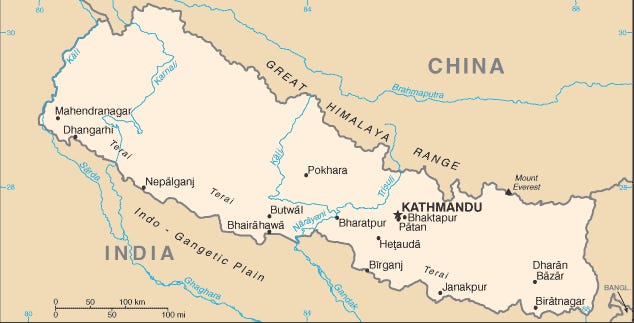According to the Nepal Department of Health Services, 164 Japanese encephalitis cases have been confirmed this year, compared to 86 cases last year.
Japanese Encephalitis has now spread to 110 municipalities across 42 districts, with 28 districts…

According to the Nepal Department of Health Services, 164 Japanese encephalitis cases have been confirmed this year, compared to 86 cases last year.
Japanese Encephalitis has now spread to 110 municipalities across 42 districts, with 28 districts…

SAVE $130: As of this weekend, Amazon has the Apple Watch Series 10 discounted by 30% which comes in at $279, down from its list price of $400.

Britney Spears is back on Instagram after a short break from the platform.
Just days after deactivating her account, the 43-year-old pop star reappeared on Friday (Nov. 7), sharing a new photo with her 42 million followers. In the image, she poses…

A battle for control of a little-known chipmaker has threatened global auto production by choking off the semiconductor supply chain, though there are signs the crisis is inching toward a resolution.
The power struggle over Nexperia, a Chinese-owned Dutch semiconductor maker, highlights how technology supply chain vulnerabilities are squeezing auto makers, most notably forcing Honda to halt production at a Mexican factory making its popular HR-V crossover for North American markets. It also exposes how Europe is caught in the middle of the wider geopolitical showdown between Washington and Beijing.
Here’s a look at the dispute:
A surprise move
The turmoil erupted into public view in mid-October, when the Dutch government announced it had invoked a rarely used World War II-era law to take effective control of Nexperia weeks earlier.
The Dutch ministry of economic affairs said it took action because of national security concerns. Officials said they intervened because of “serious governance shortcomings” at Nexperia, asserting control to prevent the loss of crucial tech know-how that could threaten Europe’s economic security.
Nexperia’s Chinese owner Wingtech Technology, a partially state-owned company, is at the heart of the dispute. Amid the boardroom battle, a Dutch court granted the ministry’s request to oust Nexperia’s Chinese CEO Zhang Xuezheng. American officials told the Dutch government he would have to be replaced to avoid trade restrictions, according to a court filing.
What is Nexperia?
Nexperia makes simple semiconductors such as switches and logic chips. The auto industry — one of Nexperia’s biggest markets — uses its chips for numerous functions, such as adaptive LED headlight controllers, electric vehicle battery management systems and anti-lock brakes.
Headquartered in the Dutch city of Nijmegen, Nexperia was spun off from Philips Semiconductors two decades ago. It was eventually purchased by China’s Wingtech Technology in 2018 for $3.6 billion.
Nexperia has wafer fabrication plants in Britain and Germany. It operates an assembly and testing center in China’s southern manufacturing heartland of Guangdong — which accounts for around 70% of its end-product capacity — and similar centers in the Philippines and Malaysia.
Geopolitics
The dispute is part of the broader struggle between the U.S. and China over tech supremacy, which has left Europe caught in the middle.
It stems from Washington’s decision late last year to place Wingtech on its “entity list,” which subjects companies to export controls because of national security risks. In late September, the U.S. expanded that list to Wingtech’s subsidiaries, including Nexperia, pressuring allies to follow suit.

While Jennifer Lawrence has said the process of promoting and releasing a film like Die My Love can be “very violating,” it seems the process of creating such a raw and personal film while pregnant was much less so.
Of…

Michael is already leaving an impact on viewers.
Lionsgate released the first official teaser trailer for the forthcoming Michael Jackson biopic, Michael, on Thursday. And after its initial 24 hours, the views racked up to 116.2 million…


Former Manchester United midfielder Angel Gomes opened the scoring as Marseille moved top of Ligue 1 with a comfortable win over Brest.
The 25-year-old, who has four England caps, put Marseille ahead when his free-kick slipped through the hands of…

LOS ANGELES — Outkast, Cyndi Lauper, Salt-N-Pepa and Soundgarden will be among the newly minted members of the Rock & Roll Hall of Fame at Saturday night’s induction ceremony.
From Chubby Checker to the White Stripes, artists representing…